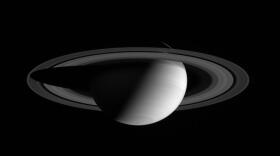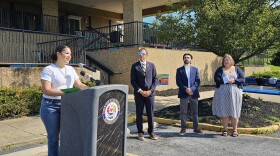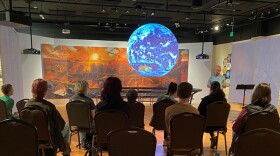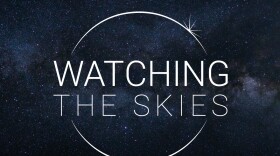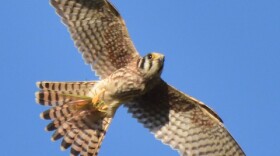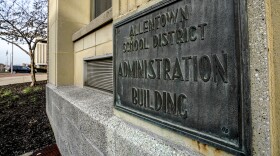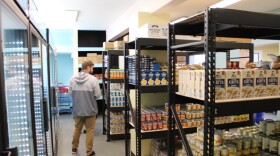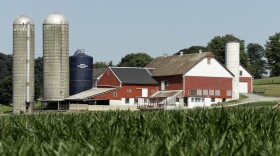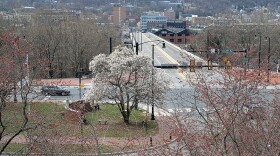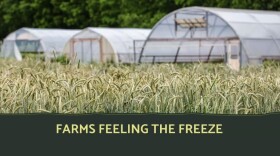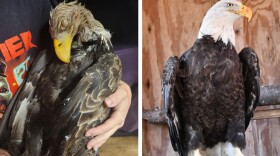-
Awardees of the state Department of Education’s Environmental Repairs Grant program were announced Monday. It focuses on eliminating lead, mold, asbestos and other environmental hazards from school buildings.
-
Brad Klein reviews the week’s astronomical highlights with Bethlehem’s ‘Backyard Astronomy Guy,’ Marty McGuire. This week should be a good one for viewing the planet Saturn.
-
Easton's Nurture Nature Center has been recommended for conditional approval for its proposed planetarium, or "immersive dome," intended to expand programming capabilities.
-
Among the winners are projects to repaint the basketball court at Building 21; build several community gardens; and plant trees.
-
The PennEnvironment Research & Policy Center on Wednesday held a news conference at the city’s Sculpture Garden announcing the nonprofit’s new report, “Lead in School Drinking Water.” Bethlehem Area School District was found lacking.
-
Will it be Woody, Tupaca, or Zurg? Lehigh Valley Zoo is enlisting the help of the public to help name its baby alpaca.
-
State officials announced a $1 million pool for the 2025 Environmental Education Grants Program, as well as the Nov. 15 deadline to apply. Two Lehigh Valley projects were funded in the last round.
-
This week, news from the International Space Station, where the seven crew members have been hosting two unexpected guests for months.
-
Staff and volunteers at the sanctuary have monitored the autumnal migration since 1934 as part of conservation research efforts. It’s the longest-running raptor migration count in the world.
-
A pack of wolves will appear at the Allentown Fair as part of the free entertainment. One of the wolves will meet attendees. A tour of their den is also scheduled.
-
Cloud cover is likely to limit thunderstorm development Monday by acting as a cap, preventing the upward movement of warm, moist air needed to fuel thunderstorms.
-
President Donald Trump and the Department of Government Efficiency canceled Pennsylvania’s $13 million contract with the Local Food Purchasing Assistance Program. A pandemic-era program, farmers were paid to supply local food banks with fresh produce.
-
This week, how to spot the first traces of the young crescent moon that marks the end of the Islamic holy month of Ramadan.
-
The fifth annual Be My Neighbor Day was held Saturday at Univest Public Media Center in Bethlehem. Children participated in crafts and gardening activities, interactive musical performances, and meet-ups with Daniel Tiger.
-
Team Pennsylvania on National Agriculture Day released “The Pennsylvania Agriculture Economic Analysis 2025.” The report takes a deep data dive into the commonwealth’s agriculture sector from 2012-2022.
-
“This weekend will feature an early-summer like weather pattern,” the National Weather Service said, highlighting dry conditions and a mix of sun and clouds expected Saturday afternoon.
-
Pasa Sustainable Agriculture on Wednesday held virtual town hall focused on the current freeze on U.S. Department of Agriculture grants earmarked for farmers implementing climate-smart production practices.
-
The Lehigh Valley Planning Commission’s Environment Committee on Tuesday reviewed plans to update sewage infrastructure in two municipalities.
-
Lehigh Gap Nature Center from Feb. 14-16 held its annual Lehigh Gap Area Feeder Watch. The long-term research project focuses on monitoring winter bird populations.
-
Light pollution has made seeing the Milky Way galaxy difficult, unless you're in a state park in north-central Pennsylvania that's a three-and-a-half-hour drive from the Lehigh Valley.
-
A recent bald eagle rehabilitation and release is a bright spot amid a dangerous time for bald eagles in the Lehigh Valley and the rest of the commonwealth. Bird flu continues to threaten wild bird populations, causing more than a dozen bald eagles to be euthanized across Pennsylvania.
-
The first-of-its-kind report, “Wildlife Corridors: How reconnecting habitats is protecting Pennsylvania’s native species," highlights 10 innovative wildlife corridor projects around the state.



